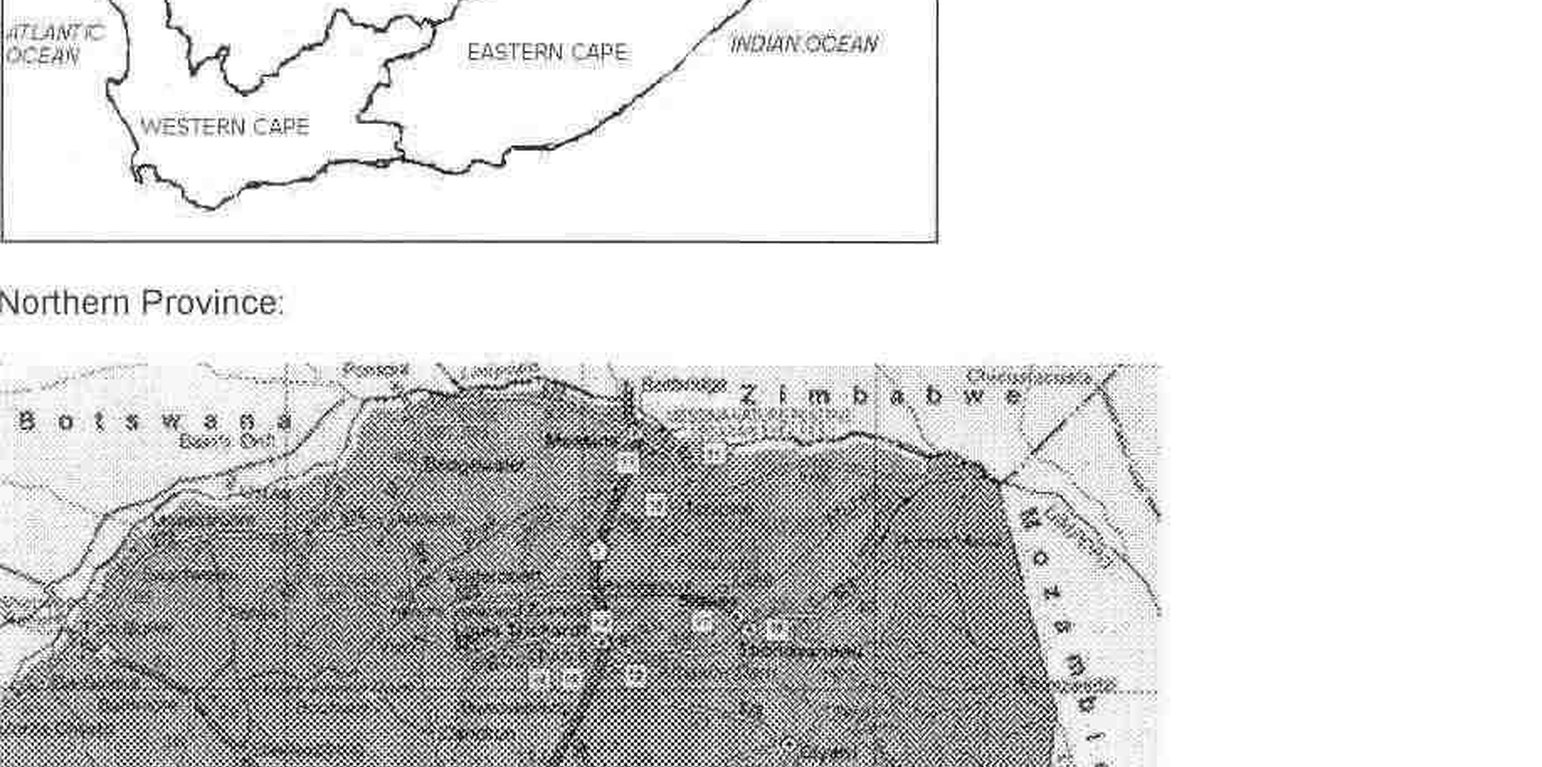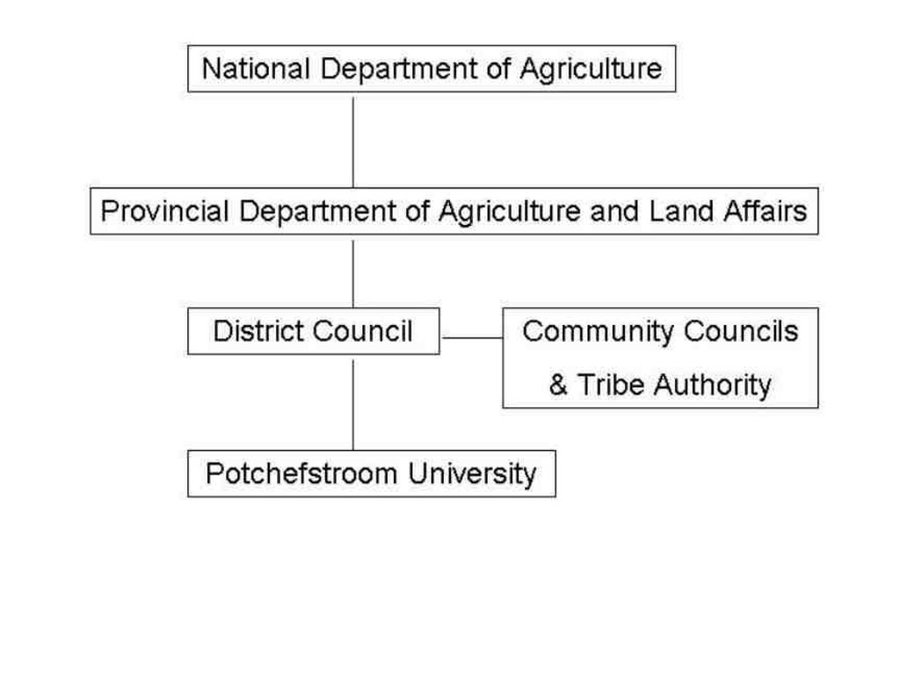Government funded demonstrations
(South Africa)
Description
Government funded restoration demonstration site to restore degraded land - by community participation. Community becoming the key sake holders - Capacity building.
Aims / objectives: Awareness raising and community participation. Capacity building, to teach the aim and type of technologies to the communities with the help of extension workers, scientists and academic staff, including postgraduate students. The main aim is to improve the condition of the land for high grazing capacity and production potential.
Location
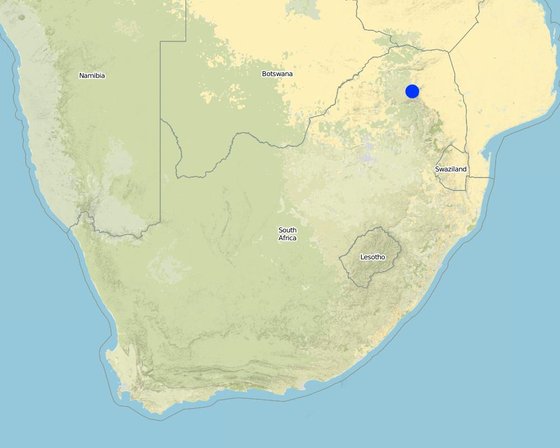
Location: North West Province, South Africa
Geo-reference of selected sites
Initiation date: n.a.
Year of termination: 2002
Type of Approach
-
traditional/ indigenous
-
recent local initiative/ innovative
-
project/ programme based
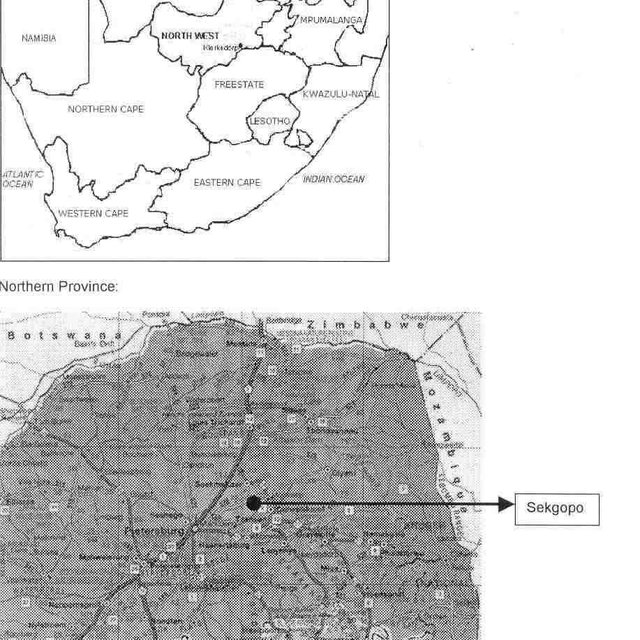
Map of area.
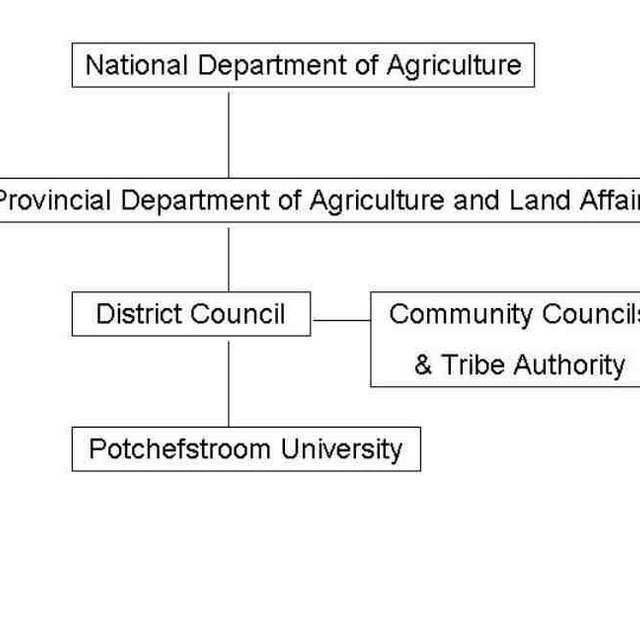
Organogram
Approach aims and enabling environment
Main aims / objectives of the approach
The Approach focused mainly on SLM with other activities (Capacity building of SWC technicians and community members.)
Awareness and participation. Training of technologies for restoration. On site or 'On-Farm' technology application.
The SLM Approach addressed the following problems: Restoring degraded land (old lands) by cultivation and oversowing technologies.
Conditions enabling the implementation of the Technology/ ies applied under the Approach
-
Legal framework (land tenure, land and water use rights): The existing land ownership, land use rights / water rights helped a little the approach implementation: Help: land users again appreciated the role and importance of the natural resources. Hinder: lack of land tenure and ownership.
Conditions hindering the implementation of the Technology/ ies applied under the Approach
-
Availability/ access to financial resources and services: No money for restoration. Negative cost/benefit ration in short term.
Treatment through the SLM Approach: Apply more cost effective technologies
-
Knowledge about SLM, access to technical support: No awareness and skills
Treatment through the SLM Approach: Capacity building and job creation. Commitment by stake holders and rural communities assured.
Participation and roles of stakeholders involved
Stakeholders involved in the Approach and their roles
| What stakeholders / implementing bodies were involved in the Approach? |
Specify stakeholders |
Describe roles of stakeholders |
| local land users/ local communities |
Specific ethnic groups: Sotho's |
Work done and technology carried out by community. Mostly women as they need to earn money for food and household. Community councils; tribal authority - Chiefs make decisions. |
| NGO |
|
University helped with implementation of technology |
| national government (planners, decision-makers) |
Funded mainly by NDA |
|
| international organization |
|
Funds |
Lead agency
National specialists improved and designed technologies and land users gave inputs with regard to type of area, plants and usage of grazing land.
Involvement of local land users/ local communities in the different phases of the Approach
none
passive
external support
interactive
self-mobilization
initiation/ motivation
Mainly:public meetings; partly: workshops/seminars
planning
Mainly: workshops/seminars; partly: public meetings
implementation
Mainly: responsibility for major steps; partly: casual labour
Decision-making on the selection of SLM Technology
Decisions were taken by
-
land users alone (self-initiative)
-
mainly land users, supported by SLM specialists
-
all relevant actors, as part of a participatory approach
-
mainly SLM specialists, following consultation with land users
-
SLM specialists alone
-
politicians/ leaders
Decisions were made based on
-
evaluation of well-documented SLM knowledge (evidence-based decision-making)
-
research findings
-
personal experience and opinions (undocumented)
Technical support, capacity building, and knowledge management
The following activities or services have been part of the approach
-
Capacity building/ training
-
Advisory service
-
Institution strengthening (organizational development)
-
Monitoring and evaluation
-
Research
Capacity building/ training
Training was provided to the following stakeholders
-
land users
-
field staff/ advisers
Form of training
-
on-the-job
-
farmer-to-farmer
-
demonstration areas
-
public meetings
-
courses
Subjects covered
Ecological principles; Restoration technologies; NRM principles.
Advisory service
Advisory service was provided
-
on land users' fields
-
at permanent centres
Name of method used for advisory service: Demonstration/Participation; Key elements: 'Learning by Doing'; 1) Mainly: government's existing extension system, Partly: non-governmental agency.
Advisory service is inadequate to ensure the continuation of land conservation activities; Monitoring, data analysis and presenting of results will be conducted by Research staff and project implementation. Expert advice needed on a continuous basis.
Institution strengthening
Institutions have been strengthened / established
-
no
-
yes, a little
-
yes, moderately
-
yes, greatly
Describe institution, roles and responsibilities, members, etc.
Type of support
-
financial
-
capacity building/ training
-
equipment
Further details
Monitoring and evaluation
bio-physical aspects were regular monitored through measurements
technical aspects were ad hoc monitored through observations
socio-cultural aspects were ad hoc monitored through observations
economic / production aspects were ad hoc monitored through observations
area treated aspects were regular monitored through measurements
no. of land users involved aspects were regular monitored through measurements
management of Approach aspects were regular monitored through measurements
There were no changes in the Approach as a result of monitoring and evaluation: This was one site establishment for demonstration purposes of technologies.
Research
Research treated the following topics
-
sociology
-
economics / marketing
-
ecology
-
technology
Vegetation and soil monitoring/analysis. Application of restoration technologies in demonstration plots.
Research was carried out on-farm
Financing and external material support
Annual budget in USD for the SLM component
-
< 2,000
-
2,000-10,000
-
10,000-100,000
-
100,000-1,000,000
-
> 1,000,000
Precise annual budget: n.a.
Approach costs were met by the following donors: government (national - Agriculture): 80.0%; national non-government (University): 20.0%
The following services or incentives have been provided to land users
-
Financial/ material support provided to land users
-
Subsidies for specific inputs
-
Credit
-
Other incentives or instruments
Financial/ material support provided to land users
partly financed
fully financed
agricultural: seeds: fertilizers
Labour by land users was
-
voluntary
-
food-for-work
-
paid in cash
-
rewarded with other material support
Impact analysis and concluding statements
Impacts of the Approach
No
Yes, little
Yes, moderately
Yes, greatly
Did the Approach help land users to implement and maintain SLM Technologies?
Oversowing and better soil seed bank; good cultivation methods; certain adapted grass species used.
Did other land users / projects adopt the Approach?
Approach will be extended to other rural areas.
Main motivation of land users to implement SLM
Sustainability of Approach activities
Can the land users sustain what hat been implemented through the Approach (without external support)?
Extension workers have learned the SWC technology from specialists (University researcher) and he/she together with the land user will hopefully extend the technology to larger and other areas on that own. Specialist must however make results available o
Conclusions and lessons learnt
Strengths: land user's view
-
Learned a lot - especially with regard to the restoration process
-
Earned money - job-creation
-
Knowledge about sustainable rangeland management strategies improved
-
School children and teachers involved. School projects on SWC technologies and restoration ecology in particular
Strengths: compiler’s or other key resource person’s view
-
Co-operation between all stakeholders (How to sustain/ enhance this strength: By making data and analysis scientifically sound - results better)
-
Land users, technicians/extension, researcher, policy makers
-
SWC technology will be monitored by scientists - value added to project
Weaknesses/ disadvantages/ risks: land user's viewhow to overcome
-
Often too long before action is taken
Faster action. Extension better and more committed
-
Linguistic abilities. Land user has another language (Sotho), not spoken by specialist
Take local language classes and learn local language
-
SWC technology application must not only be build on job-creation incentives, but must be sustainable in the long term and applied by land user without payment.
Weaknesses/ disadvantages/ risks: compiler’s or other key resource person’s viewhow to overcome
-
Often too long before action is taken
Faster action. Extension better and more committed
-
Linguistic abilities. Land user has another language (Sotho), not spoken by specialist
Take local language classes and learn local language
-
SWC technology application must not only be build on job-creation incentives, but must be sustainable in the long term and applied by land user without payment.
References
Date of documentation: Jan. 14, 2009
Last update: June 18, 2017
Resource persons
-
Klaus Kellner (klaus.kellner@nwu.ac.za) - SLM specialist
-
Anushka Barac - SLM specialist
-
Loraine Van den Berg - SLM specialist
-
Anja J van Rensburg - SLM specialist
-
Lehman Lindeque (lehman.lindeque@gmail.com) - SLM specialist
-
Izak Van der Walt - SLM specialist
-
Augustine Monque - SLM specialist
Full description in the WOCAT database
Documentation was faciliated by
Institution
- Department of Agriculture of Zambia (Department of Agriculture) - Zambia
- Dept. of Agriculture, Northern Province (Dept. of Agriculture, Northern Province) - South Africa
- Potchefstroom Universiteit vir CHO (Potchefstroom Universiteit vir CHO) - South Africa
Project
